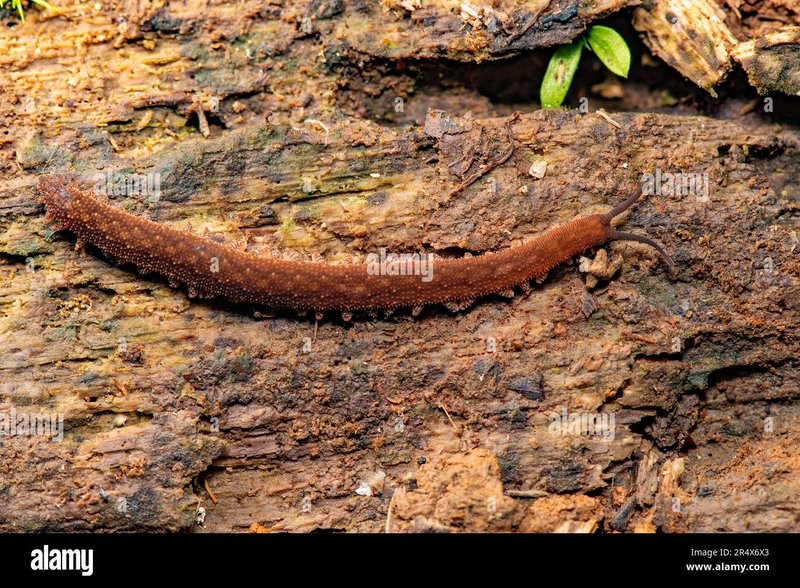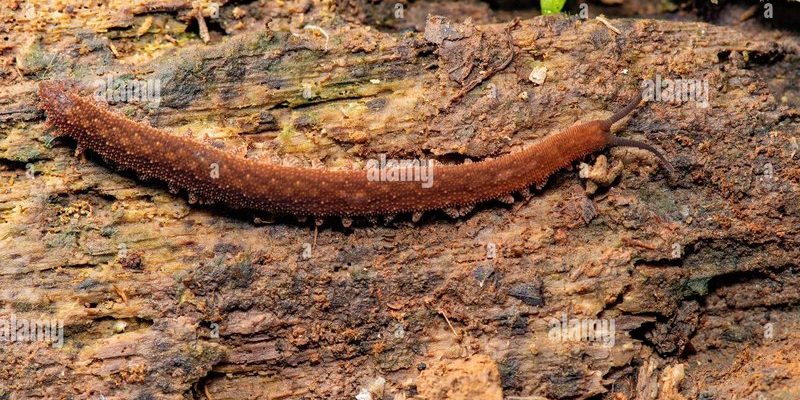
Velvet worms might look like they belong in a sci-fi movie, with their soft, velvety bodies and multiple pairs of legs. These ancient organisms date back millions of years, and their presence in protected areas highlights the importance of conserving our natural environments. As you sip your coffee, consider this: Do we really understand the delicate balance of ecosystems, and how these tiny creatures fit into the larger picture? In this article, we’ll explore the velvet worm populations in protected forest reserves, their role in the ecosystem, and the challenges they face.
What Are Velvet Worms?
Let’s get to know the stars of our show! Velvet worms, belonging to the phylum Onychophora, are soft-bodied, segmented creatures that thrive in humid environments, mainly in tropical forests. They have a unique appearance, resembling a cross between a caterpillar and an alien. With their slim, elongated bodies covered in a soft, velvety coating, they might not look intimidating, but they are fascinating in their own right.
One interesting aspect of velvet worms is their **predatory behavior**. They use a remarkable method to catch their prey, which includes small insects. By secreting a sticky slime, they can immobilize their dinner before munching on it. This hunting style is not just interesting; it plays an essential role in regulating insect populations within their habitat. So, velvet worms are not only charming but also crucial players in the food web.
These creatures are often found in leaf litter and under tree bark in forested areas, making them somewhat of an elusive find for those who venture into the woods. However, their habitats are mainly concentrated in places like **protected forest reserves**, where conservation efforts make it possible for them to thrive without the pressures of deforestation and habitat destruction.
The Importance of Protected Forest Reserves
Protected forest reserves serve as sanctuaries for numerous species, including velvet worms. These areas are crucial because they preserve biodiversity, allowing various forms of life to coexist. But why should we care? Here’s the thing: Biodiversity isn’t just nice to have; it’s essential for a healthy ecosystem.
Protected areas help maintain environmental balance. They provide habitats for wildlife, ensuring that species like velvet worms can thrive amidst the lush vegetation. Without these reserves, many creatures risk extinction due to habitat loss, pollution, and climate change. Think about it this way: these reserves are like nature’s safekeeping, holding onto our planet’s biological treasures.
Moreover, the presence of velvet worms and other unique species can be indicators of ecological health. By studying their populations in protected areas, scientists gain valuable insights into the condition of these ecosystems. If velvet worms flourish, it often means the habitat is stable and thriving, which benefits all life forms, including humans.
Challenges Facing Velvet Worm Populations
While velvet worms are somewhat protected within forest reserves, they still face various challenges. One significant threat is **climate change**. These creatures thrive in specific environmental conditions, and even slight changes in temperature or humidity can impact their populations. If forest environments become too dry or warm, velvet worms may struggle to survive.
Another issue is habitat fragmentation. As human activities encroach on natural landscapes, even protected areas can become fragmented. Roads, agriculture, and urbanization can isolate populations, making it difficult for velvet worms to find mates and food. Imagine being stuck in a small room with no way to expand; that’s what these creatures face when their habitats are divided.
Additionally, the introduction of non-native species can upset the delicate balance in these ecosystems. Invasive predators or competitors can outcompete velvet worms for resources, leading to population declines. This complex web of challenges means that even in protected areas, these little guys need our help to thrive.
The Role of Velvet Worms in Ecosystems
Velvet worms might be small, but they play a big role in their ecosystems. As predators, they help control insect populations, which can lead to healthier plant life. By keeping certain pest populations in check, velvet worms contribute to the overall balance of their habitats.
Additionally, when velvet worms consume organic matter and decomposing materials, they help recycle nutrients back into the soil. This process enriches the forest floor, supporting the growth of plants and, in turn, providing sustenance for other wildlife. In a way, velvet worms act as nature’s recyclers, ensuring that nothing goes to waste.
It’s also interesting to note that their presence can indicate environmental health. Scientists often look at velvet worm populations as indicators of how well an ecosystem is functioning. If these creatures are thriving, it usually means that the ecosystem is balanced and healthy—a true sign that conservation efforts are working.
Conservation Efforts for Velvet Worms
Conservation efforts are crucial for the survival of velvet worms, especially in protected forest reserves. Many organizations focus on habitat preservation, which helps maintain the natural environments these creatures need to thrive. By protecting these areas from deforestation and development, we’re not just saving velvet worms; we’re also preserving countless other species that share their habitat.
Awareness is another vital part of conservation. Educating the public about the significance of velvety worms and the ecosystems they inhabit can drive support for conservation initiatives. When people understand that these tiny creatures contribute to the health of our forests, they’re more likely to support policies that protect their habitats.
Monitoring velvet worm populations is equally important. Researchers conduct field studies to track their numbers and health in various environments. This data helps guide conservation decisions and ensures that the efforts are making a tangible impact. It’s like keeping an eye on the health of a loved one; you want to know they’re doing okay.
How You Can Help Velvet Worm Populations
You might be wondering how you can make a difference for velvet worms and their habitats. Here are a few simple ways to get involved:
- Support Conservation Organizations: Joining or donating to organizations that focus on forest conservation can go a long way in preserving habitats.
- Practice Responsible Eco-Tourism: If you visit forest reserves, make sure to follow the rules and respect the environment. Stay on trails and avoid disturbing wildlife.
- Spread Awareness: Share what you’ve learned about velvet worms with friends and family. The more people know about these creatures, the more support conservation efforts will receive.
- Reduce Your Carbon Footprint: Every bit helps! Lowering emissions can combat climate change, benefiting all species, including velvet worms.
By taking small steps, we can contribute to the preservation of these remarkable creatures and their habitats. After all, every little bit counts in the grand scheme of things!
Wrapping It Up
Understanding the role of velvet worms in protected forest reserves opens our eyes to the diverse life forms that inhabit our planet. These intriguing creatures, along with countless others, contribute to the delicate balance of ecosystems. By supporting conservation efforts and recognizing their importance, we can help ensure that velvet worms continue to thrive for generations to come.
So next time you think of forests, remember the velvet worms—the unsung heroes of the forest floor. They may be tiny, but their impact is anything but small. Let’s work together to protect their homes and the rich biodiversity they represent.

